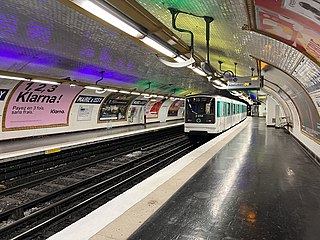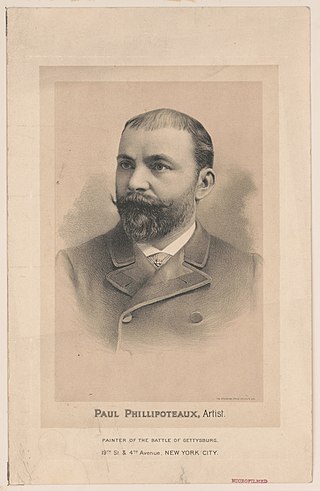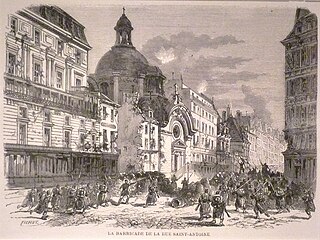
The Paris Commune was a French revolutionary government that seized power in Paris on 18 March 1871 and controlled parts of the city until 28 May 1871. During the Franco-Prussian War of 1870–71, the French National Guard had defended Paris, and working-class radicalism grew among its soldiers. Following the establishment of the French Third Republic in September 1870 and the complete defeat of the French Army by the Germans by March 1871, soldiers of the National Guard seized control of the city on 18 March. The Communards killed two French Army generals and refused to accept the authority of the Third Republic; instead, the radicals set about establishing their own independent government.

Vosges is a department in the Grand Est region, Northeastern France. It covers part of the Vosges mountain range, after which it is named. Vosges consists of three arrondissements, 17 cantons and 507 communes, including Domrémy-la-Pucelle, where Joan of Arc was born. In 2019, it had a population of 364,499 with an area of 5,874 km2 (2,268 sq mi); its prefecture is Épinal.
A commune is an alternative term for an intentional community. Commune or comună or comune or other derivations may also refer to:

Corentin Celton is a station on line 12 of the Paris Métro in the commune of Issy-les-Moulineaux.

Mairie d'Issy is the southern terminus of line 12 of the Paris Métro in the commune of Issy-les-Moulineaux. It is named after and located near the town hall. Shops located on the avenue Victor Cresson and avenue de la République are served by the station.

Issy-les-Moulineaux is a commune in the southwestern suburban area of Paris, France, lying on the left bank of the river Seine. Its citizens are called Isséens in French. It is one of Paris's entrances and is located 6.6 km (4.1 mi) from Notre Dame Cathedral, which is considered Kilometre Zero in France. On 1 January 2010, Issy-les-Moulineaux became part of the Grand Paris Seine Ouest agglomeration community, which merged into the Métropole du Grand Paris in January 2016.

Fort Mont-Valérien is a fortress in Suresnes, a western Paris suburb, built in 1841 as part of the city's ring of modern fortifications. It overlooks the Bois de Boulogne.

Paul Dominique Philippoteaux was a French artist. He is best known for a cyclorama illustrating the Battle of Gettysburg.

Henri Félix Emmanuel Philippoteaux was a French artist and illustrator, known primarily as a battle painter.
The Château d'Issy, at Issy-les-Moulineaux, in the Hauts-de-Seine department of France, was a small French Baroque château on the outskirts of Paris. It was destroyed during the Paris Commune of 1871.

The Thiers wall was the last of the defensive walls of Paris. It was an enclosure constructed between 1841 and 1846 and was proposed by the French prime minister Adolphe Thiers but was actually implemented by his successor. The 33 kilometres (21 mi) long wall and ditch made a complete circuit around the city as it stood at the time of the July Monarchy. It was bombarded by the Prussian Army during the Franco-Prussian War, captured by government troops during the Paris Commune and refortified at the start of the First World War. However, by then it had become obsolete as a fortification and was a barrier to the expansion of the city. The area immediately outside of it, known as "the zone", had become a shanty town. The wall was demolished in the interwar period; its path today can be traced by the Boulevards of the Marshals which originally ran just behind the fortifications and by the Boulevard Périphérique which was later built just outside. A few remnants of the wall can still be seen.

Raymond Adolphe Séré de Rivières was a French military engineer and general whose ideas revolutionized the design of fortifications in France. He gave his name to the Séré de Rivières system of fortifications constructed after the Franco-Prussian War of 1870. Described as the Vauban of the 19th century, his Belgian counterpart was Henri Alexis Brialmont.

Édouard Achille Ballière was a French architect.

Fort d'Issy was one of the fortifications of the city of Paris, France, built between 1841 and 1845. It was one of six forts built to the south of the main wall around the city. The fort was placed too close to the city to be effective, and had a poor design that did not take into account recent experience of siege warfare. It was quickly silenced during the Franco-Prussian War of 1870–71. After the armistice of February 1871 the fort was defended by National Guards of the Paris Commune against the French regular army in April–May 1871. The defense was irresolute and the fort was soon occupied. Today the site of the fort is an "eco-district", an ecologically friendly residential area.
Joseph Faron was a French general. He came from a working-class background and did not complete his secondary education. He served with distinction in Senegal, was interim Governor of French Cochinchina in 1869–70, and played important roles in the two sieges of Paris during and after the Franco-Prussian War.
On 10 March 1962, a car bomb exploded during a peace event in Issy-les-Moulineaux, near Paris, France. It resulted in the deaths of three people and wounded forty-seven. It killed Roger Pateron, Albert Lavaud and Gabriel Cordier and caused significant damage to surroundings.
This chronology of the Paris Commune lists major events that occurred during and surrounding the Paris Commune, a revolutionary government that controlled Paris between March and May 1871.

The semaine sanglante was a weeklong battle in Paris from 21 to 28 May 1871, during which the French Army recaptured the city from the Paris Commune. This was the final battle of the Paris Commune.
The Battle of Meudon took place on 3 April 1871 between the Paris Commune and Versaillais government forces near Meudon in the Île-de-France. The battle was part of the attempts by the Paris Commune to seize Versailles, the seat of Adolphe Thiers’ government, and it ended in a defeat for the Federates.
Béatrix Excoffon, born Julia Euvrie or Œuvrie was a militant communard who served as an ambulance nurse during the Paris Commune in 1871. She was vice-president of the Club des Femmes de la Boule Noire, and was known as "the republican".












